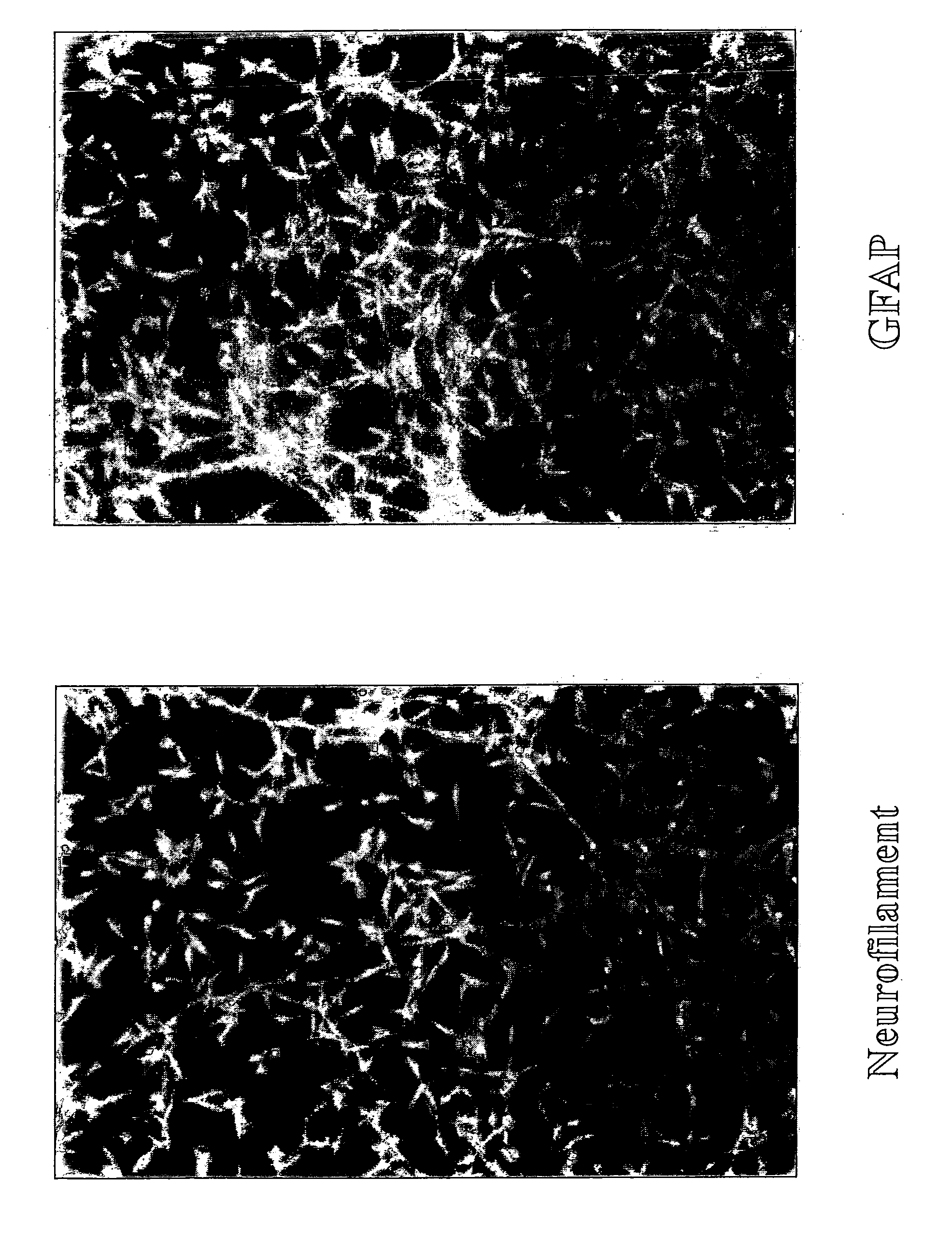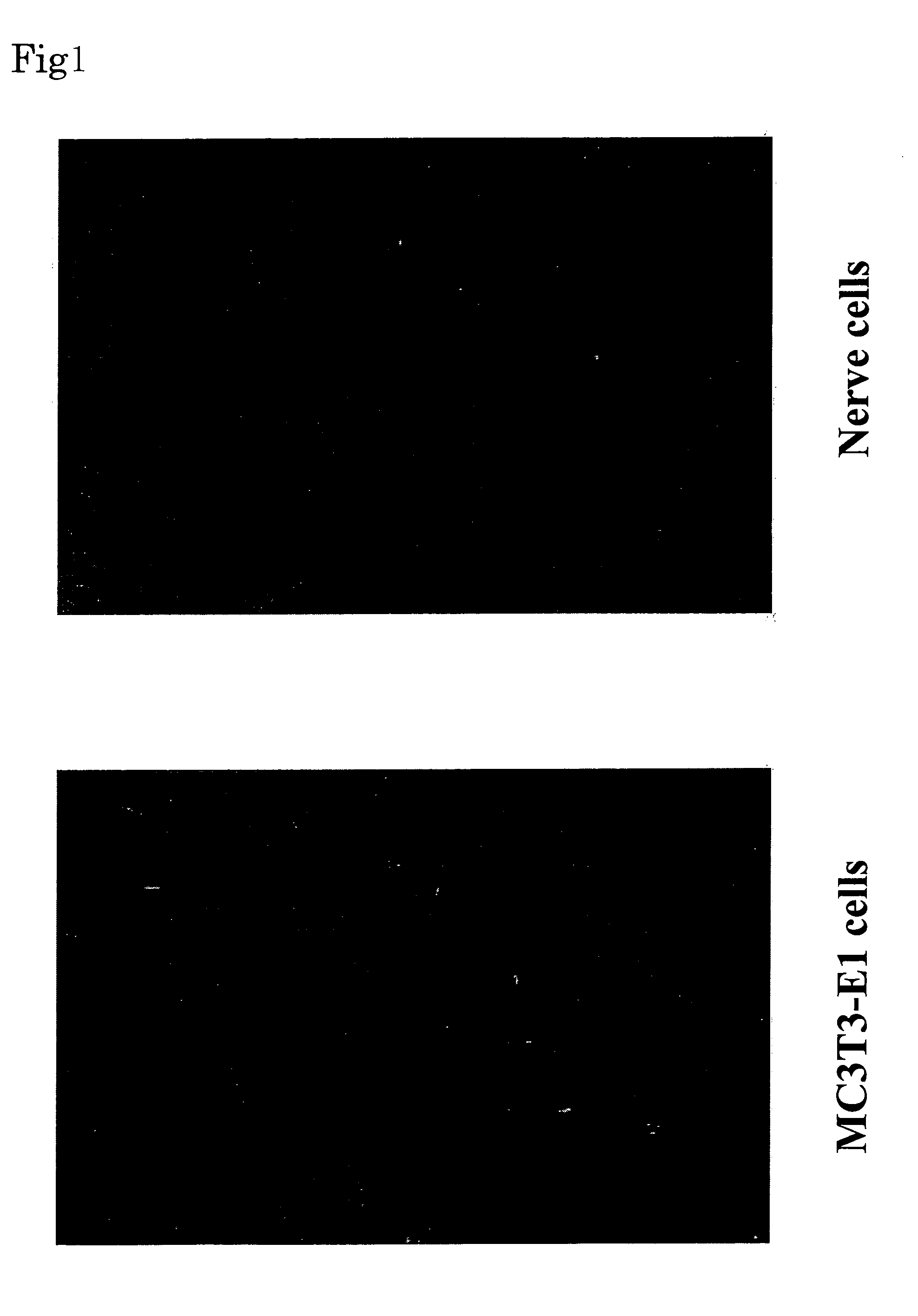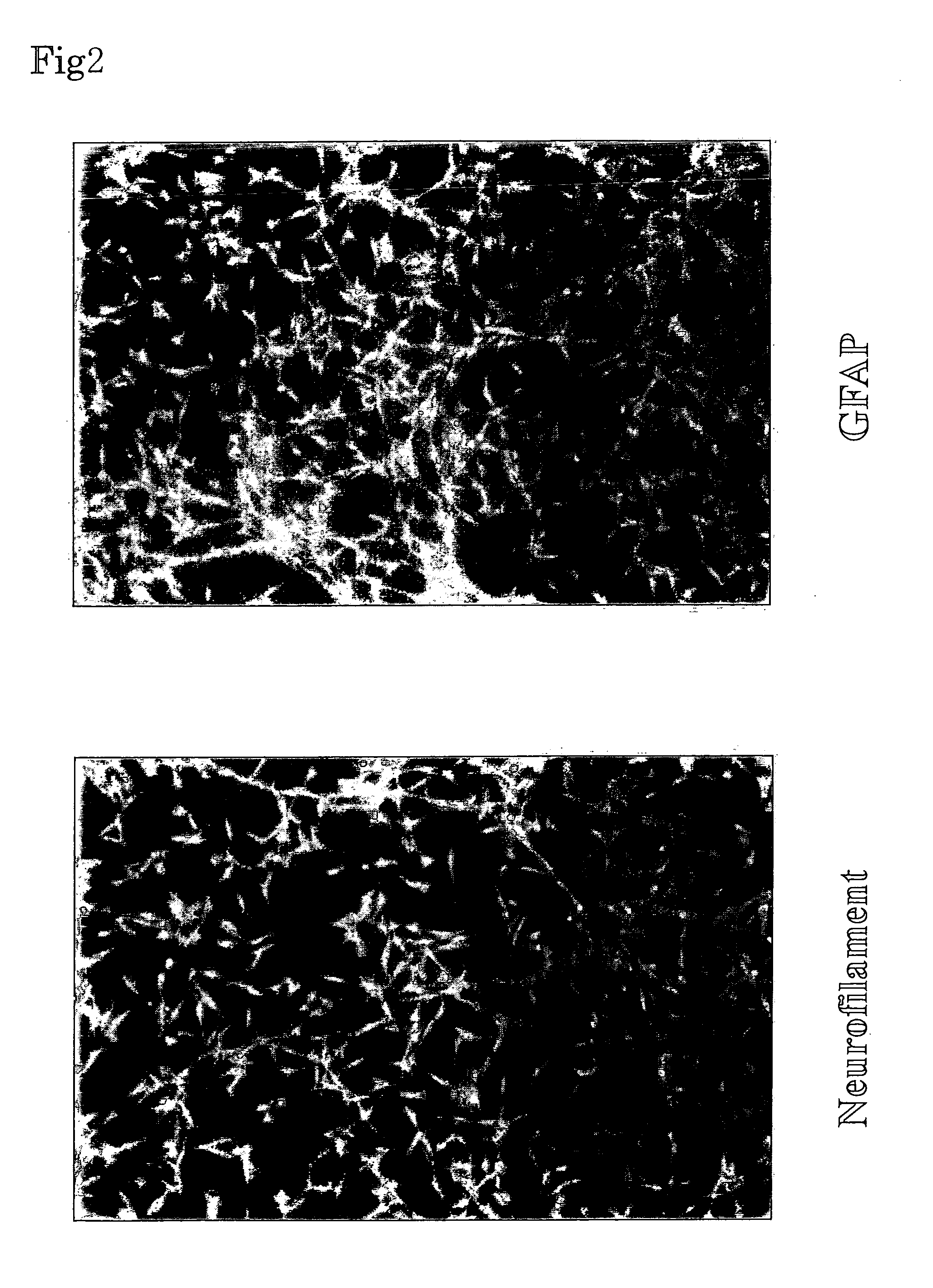Method for Transdifferentiating Cells
a technology of transdifferentiating cells and cells, applied in the field of transdifferentiating cells, can solve the problems of difficult control of such cells, inability to control the differentiation direction, and not only the technology requires time and effort to obtain a target cell
- Summary
- Abstract
- Description
- Claims
- Application Information
AI Technical Summary
Benefits of technology
Problems solved by technology
Method used
Image
Examples
examples
[0053] (1) Method
[0054] Mouse osteoblasts of an established line (MC3T3 / E1) were cultured to subconfluency in an αMEM medium supplemented with FBS (final concentration: 10%), 5 mM to 10 mM β-glycerophosphate, 50 μg / ml ascorbic acid, and 1×Glutamax (hereinafter, the medium for osteoblasts).
[0055] Cells cultured in the medium for osteoblasts were washed with a DMEM medium. Subsequently, the culture conditions of the cultured MC3T3 / E1 were changed from culture using the medium for osteoblasts to culture using an AMEM medium supplemented with FBS (final concentration: 10%), 100 ng / ml bFGF, 10 ng / ml FGF-8, 10 ng / ml EGF, and 10 ng / ml BDNF (hereinafter, the medium for nerve cells). Changes in the cells caused by the change of the media were examined with time through morphological observation by microscopic examination and through the analysis of protein expression by immunostaining.
[0056] (2) Result
[0057] MC3T3 / E1 cells cultured in the medium for osteoblasts were transferred to the me...
PUM
| Property | Measurement | Unit |
|---|---|---|
| concentration | aaaaa | aaaaa |
| concentration | aaaaa | aaaaa |
| concentration | aaaaa | aaaaa |
Abstract
Description
Claims
Application Information
 Login to View More
Login to View More - R&D
- Intellectual Property
- Life Sciences
- Materials
- Tech Scout
- Unparalleled Data Quality
- Higher Quality Content
- 60% Fewer Hallucinations
Browse by: Latest US Patents, China's latest patents, Technical Efficacy Thesaurus, Application Domain, Technology Topic, Popular Technical Reports.
© 2025 PatSnap. All rights reserved.Legal|Privacy policy|Modern Slavery Act Transparency Statement|Sitemap|About US| Contact US: help@patsnap.com



